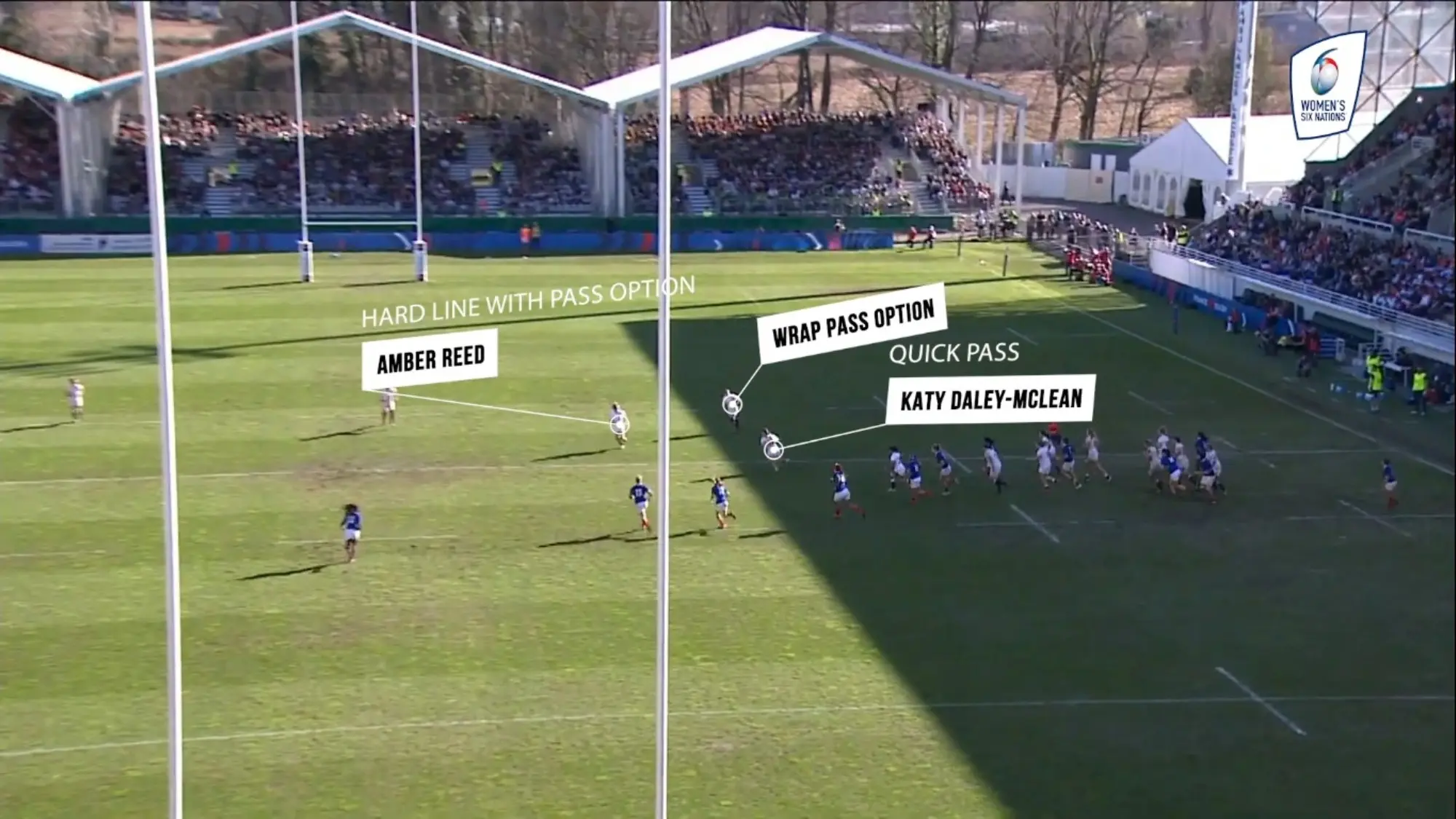As one of the premier players in the game it should come as no surprise to anyone that Emily Scarratt has been voted as the very first Women’s Six Nations Player of the Championship.
The fact that the award, in partnership with Guinness, is voted for by her peers makes it extra special.
What is that makes Scarratt so difficult to defend against?
A look at two tries scored at either end of England’s campaign show just what it is that has earned the votes of her peers, the standout player of an outstanding England team.
Scarratt consistently picked the best support lines and times her runs perfectly.
Her 61st minute try against France in Round 1 is a superb example – made extra special by the fact that the game was in the balance at the time.
The lineout provided the platform with England opting for off-the-top ball, something that provides a little more space to play into as the opposition are ten metres back from the lineout.
The strike play of choice is a ‘wrap’, a move that is simple in its construction but incredibly difficult to defend given the multiple options it presents.
When Katy Daley-McLean receives the ball it’s essential that she passes to Amber Reed as quickly as possible in order to give Reed the space and time required to run hard at the French defence while preserving the option of giving a return pass to Daley-McLean.
As she did all game, Reed runs hard at the French defence causing Pauline Bourdon to commit to the tackle, which that creates the slightest of opportunities on her right shoulder.
Coming from depth Scarratt again appears in the small gap created between Bourdon and Nassira Konde at the ideal moment, enabling Reed to confidently give a one-handed offload without having to adjust, safe in the knowledge that Scarratt would be exactly where she needed to be.
Once through the gap the job was far from complete. With 40m still to cover. Scarratt was able to use her incredible speed endurance and strength to evade the clutches of the covering French defence, beating Caroline Boujard to the try line for what turned out to be the decisive score of the match and one that ultimately would lead to a second successive Grand Slam for the Red Roses.
Months later saw Scarratt is similarly impressive form as England sealed the title and the Grand Slam in Parma.
Tactically, the performance highlighted England’s forward domination with play ‘off’ 9 often being favoured as the primary means of progressing toward the Italian try line.
Indeed, of England’s eight tries, four were scored by members of the pack, while vital hard metres were won by the forwards in each of the tries finished by the backline.
But one try stands out as the pick of the lot, again a carefully crafted strike play from lineout finished by the outstanding Scarratt.
Two minutes after Scarratt almost got over from a Daley-McClean cross-kick, England were presented with another perfect attacking platform, a lineout on the Italian 22.
The movement begins with a pin-point throw from Lark Davies, hitting Poppy Cleall in the middle of the lineout. This is the perfect position for a maul as it allows supporting players from both behind and in front of the lifting pod to immediately join.
With a stable platform and all of the Italian forwards committed, it was time to pull the trigger on the strike play. England, faced with a six versus five situation opt for most commonly used play in rugby, the blocker.
It’s important to point out that the blocker itself, which involves the ball carrier having a short passing option and a deep passing option, rarely produces a line break if used alone.
And that is where Scarratt and her intuitive ability to time her runs to perfection really excels. When Daley-McLean receives the ball she carries close to the line forcing her opposite number Veronica Madia to commit before then pulling the pass back to Abby Dow running at a 45 degree angle.
The combination of this movement and Amber Reed’s short line leaves Dow 1-on-1 against Michela Sillari. At this point Scarratt is about two metres behind play, which is enough to force Italian winger Sofia Stefan to maintain her width due to the possibility that Scarratt may receive a pass out wide.
The timing is again crucial; go too early and the defence can read the play and cover.
At full speed and timed to perfection, Scarratt attacks the space between Sillari and Dow making it impossible for the Italian defence to react and again the move ends with a try under the posts.



